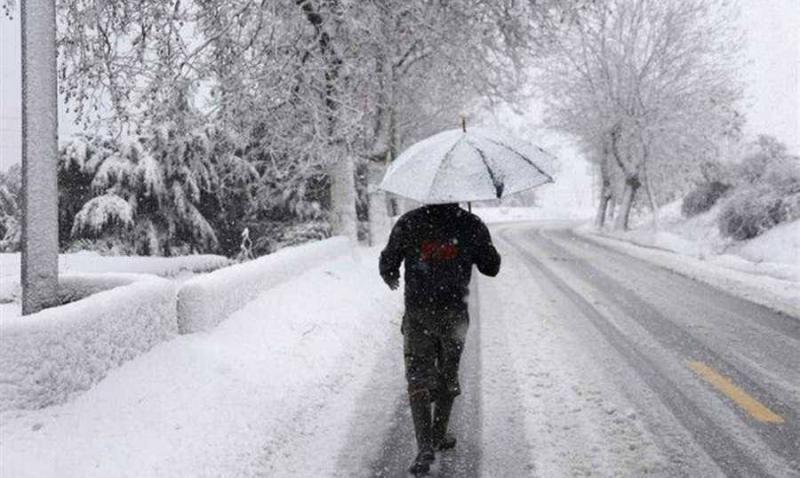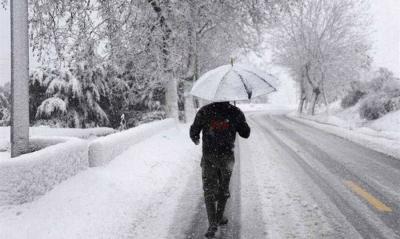In Lebanon, we may disagree on everything, but we unite over the name of the upcoming storm. No one thinks to reject the proposed name or to consider a third option or insist on a repeated name. Foreign names for local storms, predominantly female, have recently sparked objections: Why can't our storms have local names? What do beautiful Arabic names complain about? Even in storms, is “all foreign good?” Also, why do women monopolize storm names when there are enough men here whose statements or speeches could stir the fiercest storms? These are questions we brought to the Meteorological Department at Beirut Airport to seek answers, along with a discussion on the changing weather conditions in Lebanon as reported by "Nidaa al-Watan."
Aisha, Jocelyn, and Greta are the names of the storms recently assigned by the UK weather office for the anticipated storms there, where the name is either chosen in honor of a scientific female reference or based on public selections compiled into a shortlist of names. The United States was the first to officially adopt a naming system for tropical and subtropical storms since 1950, with Alice being the first storm to bear a female name in 1953. Gender equality in naming only began in 1979, when Bob was the first male name in the storm family.
In Lebanon, storm naming began in 2015, according to Mohammed King, head of the Surface Estimates Department at the Meteorological Department at the airport, who spoke to "Nidaa al-Watan." The department prepared a list of female names in alphabetical order starting with the letter Z, with Zina as the first storm name, while Nancy mistakenly came from outside the list.
With rising objections, the names of storms were supplemented with Arabic names and male names, such as Karim, Yasmina, and Hiba, and currently Hayan, which some have Frenchified and named Johan, replacing the female Daniela, and is expected to be harsher with strong winds and significant snowfall.
Storm or "Ayanah"? The storms that today bear names often heard in the media and conversations were once called "Ayanah," a winter event not causing alarm, which villagers awaited during semi-fixed stations, marked by heavy rain, winds, and snow that could touch low elevations, even reaching the beach. Powerful Ayanah or "Ayanah" would be named after the religious stations where they took place, like Ayanah of St. Montanus on January 17 or Ayanah of St. Fram on the 28th of the same month, up to Ayanah of St. Maroun in the early days of February.
Before that, Ayanah could come in the forms of Da'im or the baptism, where villagers knew that from the baptized born, water stopped, and heavy rain fell without pause.
Archiving and Warning Names attached to storms make it easier to archive them, King confirms, and to facilitate future searches through engines like Google. A name is released for a storm only if it is expected to disrupt daily life based on four criteria: wind force, temperature drop, the storm’s duration of 48 hours or more, and heavy precipitation. Most countries, though not all, have names for storms, and some may adopt a name from elsewhere, mostly using the name initially assigned, especially if the storm will affect multiple countries. In our Arab region, Lebanon and Syria are the most susceptible to storms, with their intensity decreasing as we head south, making it common for neighboring countries to adopt the name assigned by Lebanon. Once, a storm in Jordan was named Huda.
Wendy, Olga, and Norma were among the strongest storms that struck Lebanon, but Farah, which hit us at the beginning of February 2023, was the longest-lasting and nearly constituted a climatic phenomenon. Zina, which struck Lebanon in early January 2015, witnessed a significant drop in snowfall and intense rainfall, disrupting life in Lebanon and neighboring Arab countries, considered the strongest after the rare powerful storm that hit the region in late February 1992. Students in Lebanon still remember the happily mentioned storm Wendy, which kept them home due to its low snowfall.
Unnatural Phenomena The names of storms do not affect their strength, but they may draw more public attention to warnings about the dangers they may carry. We asked King whether the storm Daniela we experienced last week was harsher than others, given what it caused in terms of floods and landslides. He replied that Lebanon is accustomed to this type of storm in winter. Our winter lasts 90 days, divided into two forty-day segments; the first lasts from December 20 to January 30, usually marked by heavy rainfall and acceptable temperature drops, while the second segment from February to March experiences snowfall, more drastic temperature drops, and rainfall.
King states that this year, so far, we have closed in on the annual rainfall averages usually recorded from September to August—exceeding 815 mm in Tripoli while the annual average is 820 mm, with February, March, and April still ahead. This is an exceptional year for rainfall; the cause is a giant high-pressure system over North Africa and Western Europe. Spain, for instance, broke over a hundred records this winter, with January temperatures reaching 30.7 degrees Celsius. Thus, all cold air masses moved with full force toward Eastern Europe and down to Turkey, Egypt, Syria, and Lebanon. Lebanon is expected to experience storm Hayan with wind speeds reaching 90 km/h and significant temperature drops, especially with snow potentially reaching around 1,000 meters or lower.
We also asked whether climate change is the reason for the increasing amounts of rainfall we have recently witnessed, accompanied by floods like those seen at the airport and in various locations in Lebanon. The specialist explains that we have transitioned from the greenhouse effect to a warming phase, a more advanced stage according to UN Secretary-General Antonio Guterres. In this stage, the Mediterranean Sea's surface temperature rose above 29 degrees Celsius, resulting in a considerable amount of humidity over the Mediterranean. Cold descents from Europe led to significant rainfall. Flooding often occurs when air temperatures are still high, as the cold mass collides with the warm mass, leading to heavy downpours in a short period, as happened at the airport at the beginning of December. In recent times in Lebanon, snow was still at about 1,800 meters while air temperatures remained high, causing intense rainfall and flooding. However, as temperatures drop, precipitation decreases, as does the potential for flooding.
Between Daniela and Daniel For those who gleefully delight in female storm names, we remind them of the devastating Daniel cyclone that hit Northern Libya, causing the death of over 5,000 people, injuring 7,000 more, along with thousands missing and near-total destruction in the Libyan city of Derna following the collapse of nearby dams, drowning it under the flowing floods that obliterated nearly 90,000 square meters of land, causing damage to over three million square meters. The damages caused by Daniel cannot be compared to those caused by Daniela in Lebanon, despite its severity. King explains that it is rare for cyclones to form in the Mediterranean, but climatic conditions and warming contributed to the formation of a storm over Turkey and Greece, which was accompanied by instability that led to flooding in both countries in September. As the storm lingered over the Mediterranean for two days, it absorbed humidity from the warm sea. As the storm passed, the water temperature dropped, transforming the storm into a cyclone, leading to heavy rainfall. However, the tragedy in Derna was due to the failure of dams not built to withstand amounts of rain beyond the usual, resulting in the river basin overflowing and sweeping away the city located several kilometers away.
This cyclone, known as Medicane or Mediterranean cyclone, is rare; however, unfortunately, it can occur on our shores, especially when there is a significant thermal difference between cold and warm air masses. This extreme rainfall pattern can be observed in autumn or spring when temperatures are unstable, while in winter, temperatures stabilize and rainfall decreases.
We also inquired about the seawater surges witnessed last week in the Damour area. King explained that this occurred due to storm Daniela, where the incoming cold mass collided with the relatively warm mass prevailing in Lebanon, causing a column of moisture to form. Can we reassure the Lebanese that Hayan will be the last storm of this winter? In reality, no one can predict how many storms may occur in a single season or what the weather holds for us. While Lebanon experienced only one storm last year, 2024 appears to be a more active climatic year, competing with the military, political, and financial storms Lebanon is undergoing.




